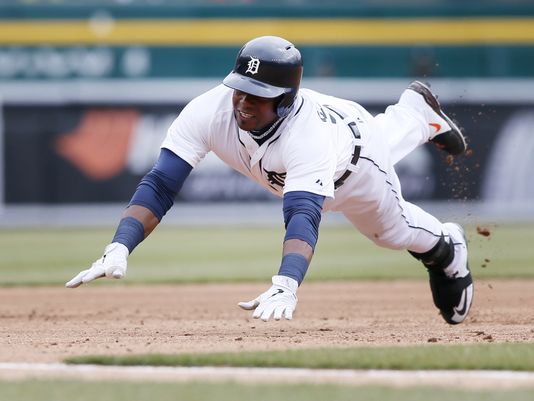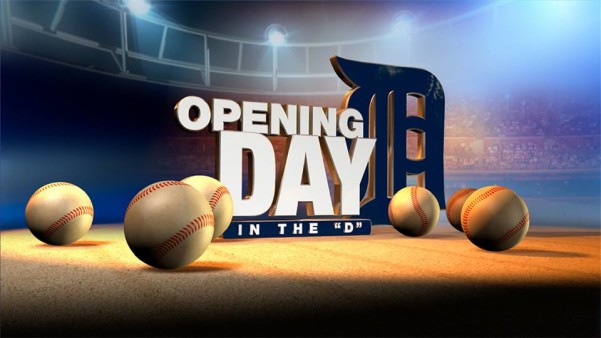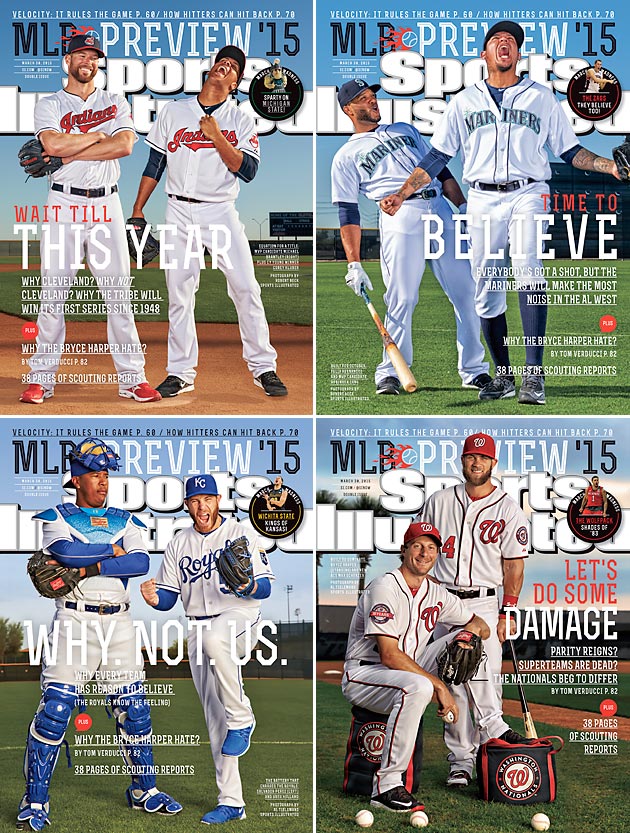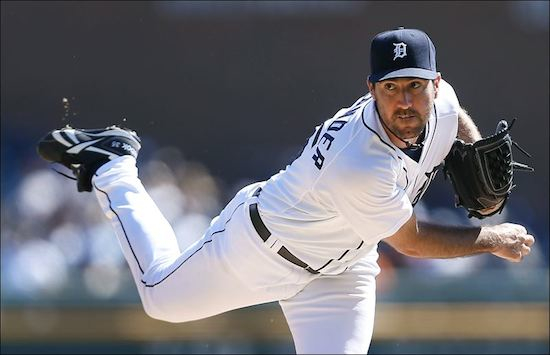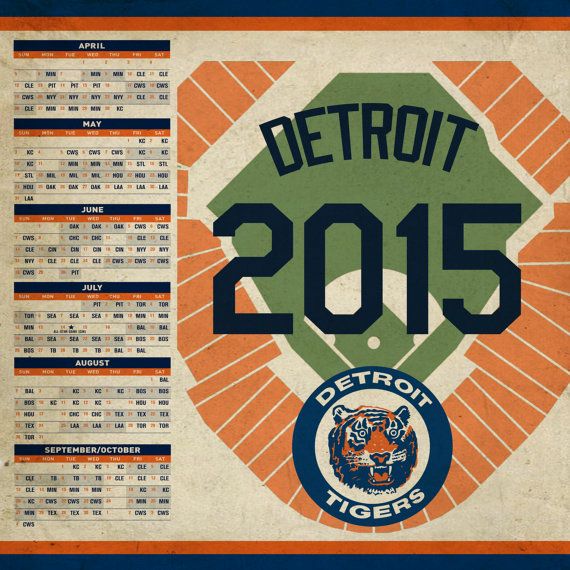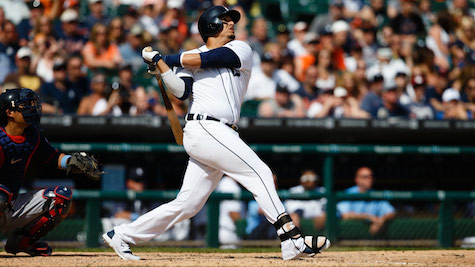Let’s be honest. Justin Verlander was awful last year. His ace title has been removed across baseball, and I don’t think there is anyone in Detroit who thinks he’s the best pitcher on the staff right now. He definitely wasn’t worth $20M last year, and we certainly don’t want Verlander’s contract to anchor a ship full of bad contracts sailing for Philly status (spoiler alert, we’re not there yet).
But can he get back to where we want him to be? I certainly want to believe so.
Using Baseball-Reference WAR crunched in Excel, in 2014 Justin Verlander ranked 41 out of 47 qualifying starters (>150 IP) with a WAR of 1.1. His ERA+ of 88 was the lowest of his career, and his K/9 dropped by a full two points from 2013 to 6.9. As a result, his K/BB was 2.45, the worst it’s been in 5 seasons. He was the 7th worst starter in the AL last year. We would have been disappointed had he been the 7th beset. Hard to justify $20M for that.
I should point out, however, that using FanGraphs WAR rankings for 2014 AL qualifying starters, he finished 15 out of 39. The reason for this is that JV’s FIP ERA (a stat that FanGraphs relies heavily upon) was 3.74 (contrast that with 18 game winner Jered Weaver’s FIP 4.19). Despite FanGraphs’ favorable algorithm, I think we can all agree that there is reason to be concerned. (All other WAR references below come from Baseball-Reference.)
So what’s coming next?
Verlander turned 32 yesterday. He still has plenty of good years left, but what we can really expect? To get an idea, I decided to take a look at similar pitchers and how they performed from age 32 on. I had it in my mind that I was going to have to spend hours compiling the data, but Baseball-References’ similar pitchers and similarity score tools made finding the data a cinch. You could get lost in the formulas and applicability, but to simplify things, I focused on similar pitchers through age 31. Thus, instead of the pitchers whose career was most similar to JV, or any pitcher who had a single season age-wise most similar to JV, I looked at pitchers who, through age 31, were the most similar to JV. The top 10, starting with the most similar:
– Mike Mussina
– Tim Hudson
– John Smoltz
– Jack Morris
– Tom Glavine
– Andy Pettite
– Dwight Gooden
– Josh Beckett
– Ramon Martinez
– Dennis Leonard
Using the amazing tools at Baseball-Reference, I was easily able to pull up the career stats for these 10 pitchers from age 32 on: Average of 6 additional seasons (though very few had a productive final season), 16.6 WAR, 3.85 ERA, and 111 ERA+. That translates to a WAR of 2.76 per year. Assuming a value of $6M per win (there’s a great discussion on value per win here, if you’re into that sort of thing), then $20M per year isn’t quite so atrocious. But it’s not a great deal by any means. Remember, he’s signed through 2019 with a vesting option in 2020.
So, okay. Maybe this can work. 16.6 WAR left isn’t so bad, and 4 of those 10 pitchers had WARs of 25+ from age 32 on. Eyeballing the median, it looks to be around 15, so 16.6 is probably a reasonable expectation. If JV pitches at least 5 more seasons (like Mussina, Hudson, Smoltz, Morris, Glavine and Pettite did), his expected WAR from today on jumps to 26. I’ll definitely take that.
So now I’m feeling pretty good.
But JV is a power pitcher, and the drop in velocity on his heater and his resulting inability to strike people out is terrifying. For the four seasons prior to 2014, his K/9 was consistently between 8.8 and 9. Last year’s precipitous drop to 6.9 a legitimate cause for concern. With this in mind I took a closer look at the power pitchers from the list above to see if they had similar decreases in K/9, and then what they accomplished from age 32 on.
Including Verlander – the top 4 career K/9 from the list above are…do you wanna guess? (this is a fun game)…
1) Beckett 8.47
2) Verlander 8.33
3) Smoltz 7.84
4) Gooden 7.70 (man did he decline quickly)
So there are three left to analyze.
Josh Beckett. Beckett’s K/9 dropped from 8.9 to 7.0 from age 28 to 32. It wasn’t as rapid as what we saw with JV, but Beckett did experience a similar decline . It rebounded nicely over his final three years, but that was after he got shipped to the NL (note I haven’t done any further study into whether there should be an NL/AL adjustment, but I’m guessing there are at least 1-1.5 opposing pitchers Kd per game). His walk rate stayed about the same after 32. From age 32-34 he went 13-25, with a 4.10 ERA. His WAR over those final 3 years was 2.3. Total. Beckett retired last October and let’s pray that he’s not a good comp for JV.
John Smoltz. Smoltzie had an incredibly productive 10 years from age 32 to 42. Well, 32-40, as 41 and 42 were kind of lost. He posted a combined WAR of 27.8, a 3.27 ERA (NL), his K rate actually went up during that time, by about 5% and his walk rate went down by 28%. At ages 38, 39, and 40, Smoltz posted WARs of 4.9, 5.9, 4.6, which are 3 of the top 5 seasons of his career. John Smoltz as a baseline is very encouraging.
Doc Gooden. Doc pitched until he was 36. None of those last 4 years were any good. 4.87 ERA, WAR of 4, a 25% decline in K rate, and a 45% increase in his BB rate. Gooden’s K rate dropped from 8.6 at age 25, to 7.1 the next year. Excluding an injury filled season when he was 29 and only pitched 41 innings his K rate never rose above 6.9 after that. So while we have obvious performance reasons to exclude Doc, I don’t think he’s a great comparison from a similarity through age 31 standpoint.
Also note that the average velocity on Verlander’s fastball has fallen steadily from 95.6 in 2009, to 93.1 in 2014 and he had been able to adjust to the dip until last year. So perhaps last year really is an outlier in terms of K/9. For example, maybe his breaking ball wasn’t as sharp, or he became more predictable in certain counts. All questions for another day.
In conclusion, we have two ways of looking at the data above. If we’re just looking at comparable pitchers through age 32, then we have cause to think that JV can be above average for 6 years, or even great for 6-8 years provided he lasts at least 4 years. This isn’t entirely assuring, but the odds aren’t bad.
Narrowing down the list above to the top 3 K pitchers presents a dichotomy. He’s Josh Beckett and out of baseball in 3 years, or he’s John Smoltz and still has Cy Young worth years ahead of time. (At this point in time, I’m sure he’s not Doc Gooden).
Overall, I’ll say I feel a little better about things than when I started. But the analysis above has presented me with a few new thoughts which I’ll explore later this year. Off the top of my head: 1) Were there other dominant factors which can help explain the K/9? 2) Did other power pitchers ever experience such large drops in K/9 and were they able to rebound? 3) How has his pitch selection changed? and, 4) Is his fastball his best pitch? And I will be paying very close attention to his velocity and strikeouts this spring.
